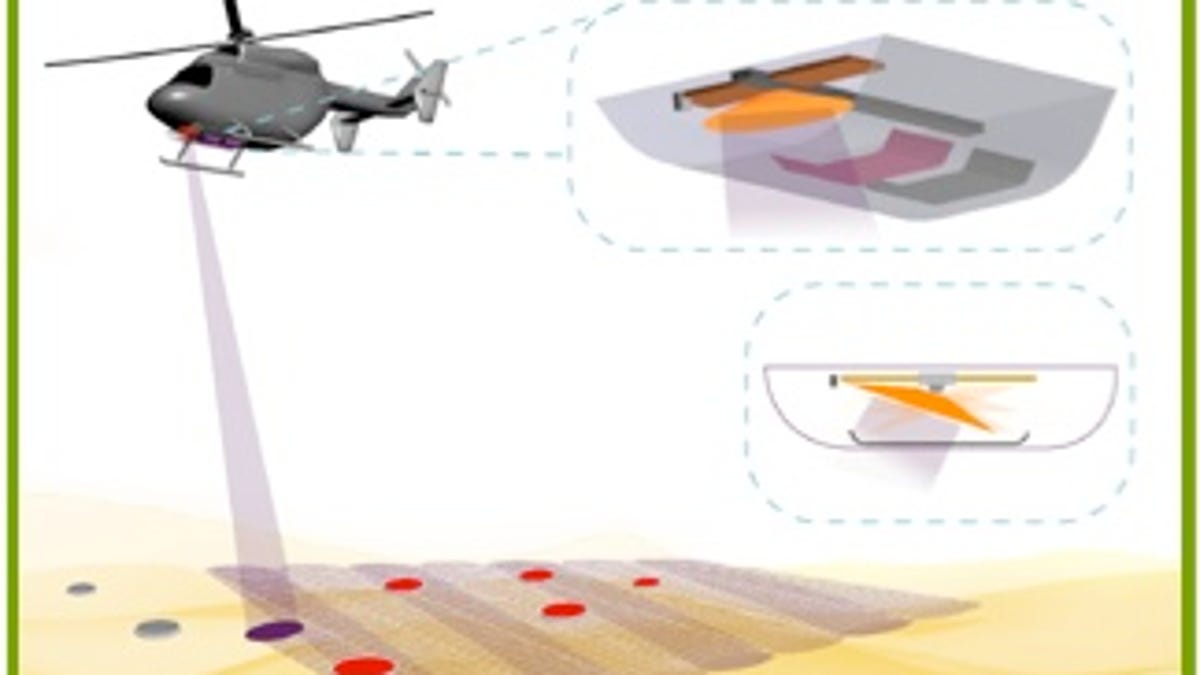Pinpointing landmines from the air
Company uses UAVs to scan and map minefields from air.

Landmine "contamination" continues to plague developing countries, where more are laid every year than are cleared, according to a UN estimate. Now, a company promises a new technique to locate and map landmines from the air-three times faster and at half the price of conventional detection methods.
A Canadian company, Mine Clearing Corp (MCC) has acquired licensing to the latest in radiometry technology; technology so sensitive it can pick out the tiny electromagnetic reflections emitted by buried objects from as high as 200 feet in the air. MCC plans to incorporate this technology into a landmine detection and GPS scan-to-map system that uses Unmanned Aerial Vehicles (UAV) able to pinpoint a landmine to within 20 inches- thus finding the "needle in the haystack" before anyone sets foot in the minefield, according to the company.
Once in the minefield, the company offers a handheld detection unit for use at ground level. Called Fig8, due to its figure eight antenna conductor loops, the detector is powered by the kinetic energy generated by sweeping the unit from side to side - "perfect for third-world countries as it needs no batteries".
The system uses patented sensor technology called "cold sky." It was developed by Roke Manor Research Ltd, a Siemens subsidiary who licensed it to MCC, (formerly Peak Resources.)
Conventional landmine removal involves probing very square foot of suspected terrain. It doesn't matter whether it's done mechanically, or by people, or by trained rats, it's expensive, time consuming and dangerous. Planting them, on the other hand, is quick and cheap.
There could be more than 100 million active landmines scattered in over 80 countries, according to some estimates. The United Nations reckons every 20 minutes someone, somewhere in the world is killed or maimed by a landmine, this despite close to $500 million allocated each year to clearing efforts.
"We are confident that this licensing agreement will allow us to bring practical low cost mine clearance to those countries where abandoned mines continue to wreak a terrible cost on human life," said Roke Managing Director David Smith.
Potential clients for the new detector include NGOs and commercial enterprises such as oil and gas, mining, agriculture and utilities companies in addition to traditional military customers.